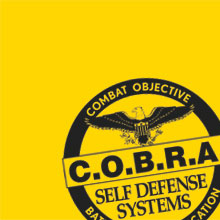
As a self defense educator, a common question I get asked is “How can I teach my younger children to be safer, without scaring them or making them paranoid?”
When your child is little, you want to make sure that he or she has some awareness as to what the “real world” could be like. Parents should teach children that most people love kids and are super nice, but sometimes there are a few mixed in that aren’t as nice. It is therefore a good idea to ask kids what they think a not-so-nice stranger looks like.
When I ask kids during COBRA courses, “What does a dangerous stranger look like?”, most kids will say, they wear a hat, look ugly or scary, and try to get you! The children can come up with some pretty creative answers based on what they’ve heard and seen on TV and sometimes in video games, from siblings, friends etc. Outside of a COBRA course, this is one of the first questions you can ask your kids to get an idea of what they know.
One of the most advantageous parts of asking your child this is that you’ll get an honest answer. This allows you to gently let them know that sometimes a “bad stranger” looks just like everyone else. They could look like us (the COBRA instructors), they could look like your neighbor, they could look like your teacher or your coach or even your dad! They don’t have a sign that says “Danger! I’m a bad stranger who wants to hurt you.”
Of course, when I share this information with a group of children at a COBRA event, I make it fun and animated so they listen, participate and do not feel fearful. You should do the same if trying this at home. In my opinion, this is a very important teaching skill. If you make the delivery regimented or too serious, the children may not want any part of it and they don’t seem to listen as well.
Teaching your younger children to be safer by talking about the reality of strangers without scaring them is both important and possible. Just keep it light and use an element of fun while raising their awareness as to what the “real world” could be like.

